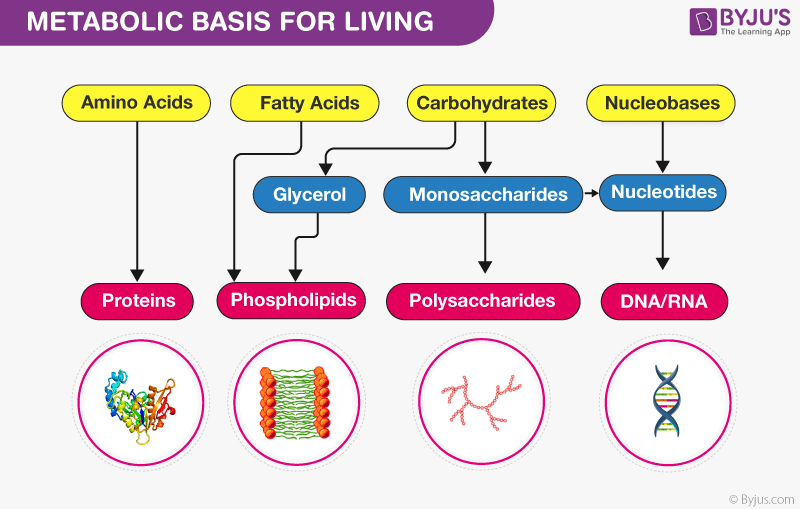Table of Contents
Introduction
Metabolism is the sum total of chemical reactions taking place in the cells of living organisms. All metabolic changes that take place are in multiple reactions and follow a particular pathway called the metabolic pathway. This metabolic pathway includes a series of reactions which involve both breaking and making of biomolecules. In other words, metabolism results in either complex compounds, being formed from simple molecules or simple micromolecules, being formed from complex molecules.
Let us go through the metabolic pathways and see how it helps in the living state of organisms in detail.
Metabolic Basis For Living

Metabolic pathways involve the extraction of energy by breaking molecules and using this energy to synthesize the building blocks. The process of metabolism occurs in two phases, namely anabolism and catabolism.
The metabolic pathway in which a complex molecule is produced from simple molecules is called an anabolic pathway. Since it involves the synthesis of metabolites, it is also known as the biosynthetic pathway.
For example, amino acids become proteins. The catabolic pathway is another metabolic pathway where a more complex structure is broken down into simple molecules.
Glycolysis is an example of the catabolic pathway where a more complex 6-C glucose molecule is reduced to 3-C pyruvic acid.
Anabolism takes place at the expense of energy, i.e., anabolic pathways need energy input and consume energy. Catabolism liberates energy. Energy is released when glucose is converted to lactic acid. In living organisms, the liberated energy packs are stored and preserved for later use. Living systems use this stored energy for making new bonds (anabolism), mechanical work and other purposes in the form of adenosine triphosphate (ATP).
Metabolism and The Living State
As we all know, every living organisms use and release energy. But how do they remain in the living state? What is the role of metabolism in it?
As we know, each living organism, be it prokaryotes or eukaryotic fungi, is composed of thousands of biomolecules/metabolites. But the proportion varies.
Within an organism, the concentration of one biomolecule may be more or less than the concentration of another biomolecule. And this non-equilibrium state of metabolites keeps them in a steady state. As they say, ‘systems at equilibrium cannot perform work’. A living system can never be in equilibrium as they are continuously undergoing metabolism; energy is released and used continuously. Metabolism helps to maintain a non-equilibrium steady-state in organisms and thus, they are in a living state. We can conclude that to be in a living state, it is important to be in a non-equilibrium state.
Stay tuned with BYJU’S to learn more about Metabolism.
Frequently Asked Questions – FAQs
What is metabolism?
a) Catabolism – the breakdown of molecules to obtain energy
b) Anabolism – the synthesis of all compounds needed by the cells
What is metabolic waste?
Define whether metabolism is a characteristic or defining feature.
Metabolism is defined as the chemical process that occur within a living organism in order to maintain life. It is a highlighting character that distinguishes a living thing from a non-living thing.

Comments